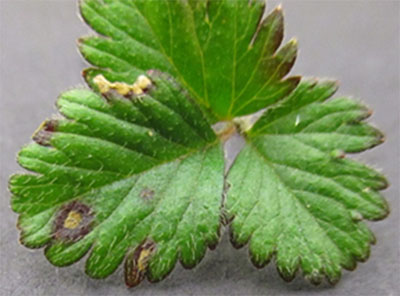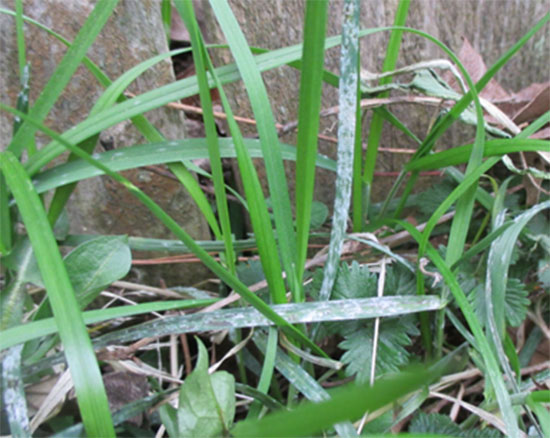Issue 1, April 20, 2015
First Foliar Findings of the Season
A number of diseases overwinter on their host plants, including cankers and some evergreen needle blights. However, for many of our pathogens, they spend the winter snug in the leaf litter from last year. This is why sanitation, or removing dead plant material from the landscape, can be so effective at managing certain diseases.
So far this year we've seen a few of these foliar pathogens that did not overwinter on the affected plant, but instead overwintered on dead plant material and had to initiate an infection on new plant tissue. These diseases were noted in the landscape, not in a greenhouse or on plants brought in from warmer climates.
The first was spotted on April 5, on a common weed. Mock or False Strawberry is a cool-season perennial, often found in poorly maintained turf. This plant was diagnosed with Septoria, a genus of pathogenic fungi which cause leaf spots to a wide number of host plants (most Septoria species have a fairly narrow host range). We often see Septoria on tomato, soybean, rudbekia, and dogwood hosts in Illinois.

Septoria on mock strawberry. Note the classic Septoria symptoms: light tan lesions with a dark purple-red border. Small black fruiting structures are visible in the center of some of the lesions. Picture credit: Diane Plewa / University of Illinois Plant Clinic
Another disease was found a few days later, on April 10. Powdery mildew on turfgrass is common on Kentucky bluegrass and various fescues. Moderate temperatures and high relative humidity favor the development of this disease, especially in shaded locations with low air movement. Powdery mildew, like Septoria, is a large group of pathogenic fungi which attack a wide variety of hosts, though the host range for each species of pathogen is fairly narrow. We often see powdery mildew on roses, phlox, bee balm, peony, and oak hosts.

Powdery mildew on turfgrass in early spring. Photo credit: Diane Plewa / University of Illinois Plant Clinic
Both Septoria and Powdery mildew are common diseases, associated with moderate temperatures and high humidity or wet conditions. We usually see these diseases as we near autumn and the end of the growing season. However, if the environmental conditions are also favorable in spring, the pathogens will not fail to take advantage and infect the new growth in our landscapes. Thankfully, the warmer, drier weather in summer usually halts infection and these are not considered serious diseases in spring. (Diane Plewa)
Author:
Diane Plewa